| Title | Pages |
|---|---|
| Two Schiff Base Compounds Derived from 5-Aminoisophthalic Acid: Chemsensors Properties for Sensing of Metal Ions and Nitroaromatic Compounds In this work, two Schiff base ligands Z2a and Z2b derived from 5-aminoisophthalic acid were synthesized and their structures were characterized by FTIR, 1H(13C) NMR and mass spectrometries. The compounds were investigated for their chemosensor properties towards metal ions [Na+, K+, Al3+, Cr3+, Mn2+, Fe3+, Co2+, Ni2+, Cu2+, Zn2+, Cd2+, Hg2+ and Pb2+] were examined using colorimetric and spectrophotometric methods (UV-Vis absorption and florescence spectroscopy). Both compounds showed similar sensing properties towards metal ions and they have shown selective sensory properties for Fe+3 and Hg+2 ions. Moreover, the compounds were examined for their fluorimetric sensing abilities for nitroaromatic compounds [4-nitrofenol (NP), nitrobenzene (NB), 2,4-dinitrofenol (DNP), 1,3,5-trinitrophenol (TNP)]. Both compounds showed higher sensitivities for DNP and TNP than NP and NB. Compound Z2b showed the highest sensitivity for DNP with Ksv value of 2.4×104 M-1. Limit of detections for nitroaromatic compounds were calculated and both compounds showed LOD values in micromolar levels. Compound Z2b has shown the lowest LOD value for DNP with 2.77 μM. 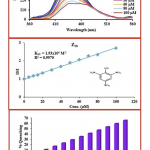
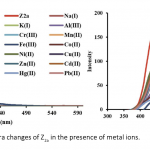


|
1 - 12 |
| Systematic Studies on the Male Genital Organs of some Blister Beetles (Coleoptera: Meloidae) of Ankara Province (Turkey) The focus of this study is to make important contributions to Meloidae taxonomy. Specimens belonging to thirty-two species of the family Meloidae (Coleoptera) were collected from Ankara province in 2018-2019. Male genital structures of these species were examined. Photographs and drawings of the male genital organ structures of all these species (32 species), and descriptions of some of them, which were found to be missing in the current literature, were given. The taxonomic key has been constructed for these species from the present literature and examined materials. Also, male genital organs of all species were compared to the literature. Photographs and drawings of the male genital organs of Alosimus luteus (Waltl, 1838), A. marginicollis (Haag-Rutenberg, 1880) and Euzonitis rubida (Ménétriés, 1832) were given for the first time with this study. 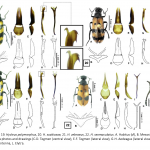
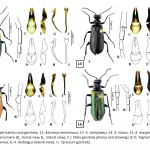

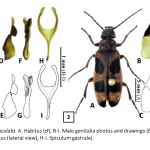
|
13 - 36 |
| Automated Cell Viability Analysis in Tissue Scaffolds Image analysis of cell biology and tissue engineering is time-consuming and requires personal expertise. However, evaluation of the results may be subjective. Therefore, computer-based learning and detection applications have been rapidly developed in recent years. In this study, Confocal Laser Scanning Microscope (CLSM) images of the viable pre-osteoblastic mouse MC3T3-E1 cells in 3D bioprinted tissue scaffolds, captured from a bone tissue regeneration study, were analyzed by using image processing techniques. The aim of this study is to develop a reliable and fast algorithm for the automated analysis of live/dead assay CLSM images. Percentages of live and dead cell areas in the scaffolds were determined, and then, total cell viabilities were calculated. Furthermore, manual measurements of four different analysts were obtained to evaluate subjectivity in the analysis. The measurement variations of analysts, also known as the coefficient of variation, were determined from 13.18% to 98.34% for live cell images and from 9.75% to 126.02% for dead cell images. Therefore, an automated algorithm was developed to overcome this subjectivity. The other aim of this study is to determine the depth profile of viable cells in 3D tissue scaffolds. Consequently, cross-sectional image sets of three different types of tissue scaf- folds were analyzed. 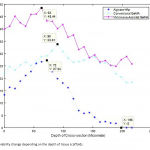
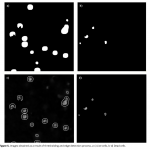
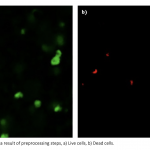

|
37 - 50 |
| Use of Composite Barrier in Radioactive Waste Repositories In this study, the performance of PAN/Zeolite-based composite barrier material was evaluated for the removal of 126Sn and 79Se radionuclides from an aqueous solution. Performance evaluation of the composite barrier material was performed separately for 126Sn and 79Se radionuclides using SWOT analysis. In addition, the risks to non-human organisms in case of accidental release of these radionuclides from radioactive waste landfills have been evaluated. These risks were evaluated by calculating the total doses of freshwater and terrestrial biota using the ERICA assessment tool. The exposed total dose range of reference biota as such crustaceans, phytoplankton, and vascular plants in freshwater was decreased to 4.02E6- 3.87E9 μG h-1 for 126Sn isotope, and 3.35E07-1.92E12 μG h-1 for 79Se isotope using composite barrier material. In terrestrial reference biota such as annelids, grasses and grasses, lichens and bryophytes, mammals and trees, the exposed total dose range was decreased to 4.51E06-7.41E04 μG h-1 for 126Sn and 2.15E06-5.53E09 μG h-1 for 79Se. 

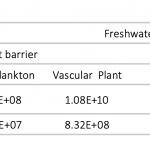
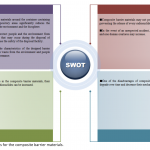
|
51 - 56 |
| Antiproliferative Properties and Evaluation of Antioxidant of Different Cornelian Cherry Genotypes and Analysis of Phenolic and Sugar Compounds by HPLC, The aim of this study was to investigate the chemical composition (vitamin C, phenolic, and sugar compounds), the cytotoxic effect on healthy (L-929) and lung cancer (A-549) cells, and the antioxidant capacity of fruits belong to thirteen cornelian cherry (Cornus mas L.) genotypes grown under the same conditions in Turkey. Fruit samples were extracted by the ASE technique. The chemical composition was analyzed by HPLC-DAD-RID. A reversed-phase Clipeus C18 reversed-phase column (250 mm × 4.6 mm, 5 μm) were used. For gradient elution mobile phase A contained 4.5 % acetic acid in water; solution B acetonitrile were used as mobile phase with flow rate 1.0 mL/min. Antioxidant capacity, total phenolic, and total anthocyanin content were determined using spectrophotometric methods. Cytotoxic effects were evaluated by MTT assay in L-929 and A-549 cell lines for 48 h. No toxic effect of the fruit extracts was observed on L-929 healthy mouse fibroblast cells, while it was determined to reduce cell proliferation (approximately 50%) on A-549 lung cancer cells. The featured genotypes were 44-03, 44-20, 44-21, 77-09, and 44-21, 44-16, 77-05, respectively. The featured genotypes for antioxidant capacity and cytotoxic effects on A-549 cells were 44-03, 44-20, 44-21, 77-09, and 44-21, 44-16, 77-05, respectively. The results have brought out that there are significant differences between the genotypes (p ≤ 0.05) and cornelian cherry fruits have a significant antioxidant capacity and potential for antiproliferative effects. 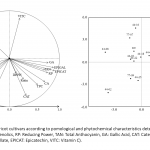

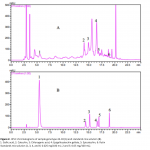
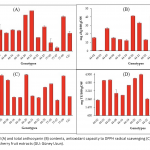
|
57 - 70 |
| Molecular Docking Mediated Virtual Drug Screening for GABAA Receptor: Promising Digoxin Derivatives In the central nervous system (CNS) of mammalian species, g-aminobutyric acid (GABA) is the primary inhibitory neurotransmitter due to it regulates neuronal development through leading neural differentiation, proliferation, migration, etc. GABAA receptor is the major GABA receptor since it has the highest expression level among the other GABA receptors within CNS. Many pieces of evidence prove that the defects in the GABAergic pathway might give rise to serious diseases such as schizophrenia, epilepsy, anxiety, depression, insomnia, etc. In this study drug library with a totally of 8170 ligands consists of three distinct datasets which are FDA-approved Drugs, Drugs Approved by World but not FDA, and Non-human Metabolites have been screened for the allosteric site of the GABAA receptor with PyRx Virtual Screening Tool and ligand-receptor interactions have been analyzed with Biovia Discovery Studio software. Results reveal that Digoxin and its two distinct derivatives (DD1 and DD2), as well as Conivaptan, are promising in the treatment of GABAergic pathway-based disorders. The findings of this report should be verified with further molecular dynamics (MD) simulations and the ligands should be tested by both in vitro and in vivo studies. 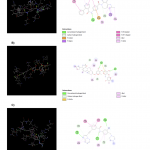
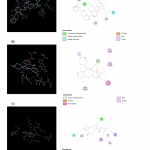
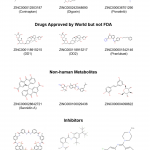
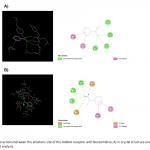
|
71 - 91 |
| Preliminary Phytochemical Screening, GC-MS, FT-IR Analysis of Ethanolic Extracts of Rosmarinus Officinalis, Coriandrum Sativum L. and Mentha Spicata Phytochemical and some proximate composition analysis was carried out on three (3) selected edible medicinal plants leaves which were believed to be of medicinal value and have physiological effects as anti-inflammatory, antibacterial, anti-pyretic, antioxidant, laxative etc. The significant aim of the research is to identify the phyto-components as well as compounds presents in the ethanolic extract of Mentha Spicata L. (Mint), Rosemarinus Officinalis (Rosemary), and Coriandrum Sativum (Coriander) using two different analytical methods, GC-MS, along with their functional groups using FT-IR. The GC-MS analysis reveals various compounds identified as major constituents and mostly all the compounds identified was found to possess medicinal properties. The data analysis from FT-IR spectrometry representing most of the strong absorptions bands which further indicates major functional groups such as aliphatic amines, alkanes, aromatic (primary and secondary) and carboxylic acids. While the preliminary phytochemical screening conducted indicates the presence of Flavonoids, Tannins, Triterpenoids, and Saponins from the ethanolic extracts of the plant extracts. Therefore the findings indicate that all the selected plant samples are potential sources of medicinal activities and can be applied in the field of phyto-medicine considering their diverse ethno-pharmacological importance. 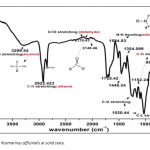
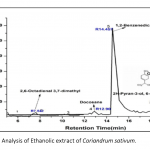
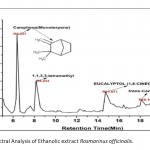
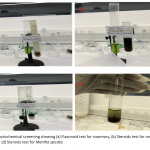
|
93 - 102 |
| Evaluation of Antimicrobial Activities of Various Herbal Oils Against Helicobacter pylori and their Cytotoxic Effects on HUVEC Cell Line Helicobacter pylori (H. pylori) infection is accepted as the most important chronic bacterial infection. In recent years, it is reported that the bacteria are developing resistance against the applied antibiotics. In order to increase the success rate, decrease recurrence and achieve eradication, it is very important to investigate nontoxic biocompatible herbal resources to be used in addition to antibiotic therapy. Herbal oils, obtained from plants are being used for various purposes for a long time, particularly in commercial and scientific fields. Therefore, in our study, we chose various herbal oils (Eucalyptus globulus, Juniperus communis, Rosmarinus officinalis, Thymus vulgaris) that are known to be effective against gastric and gastrointestinal tract diseases which do not have adequate investigations over H. pylori in the literature, and we aimed to investigate their antimicrobial activity over H.pylori and cytotoxic activity on Human Umbilical Vein Endothelial Cells (HUVEC) cell line. The antimicrobial activity is investigated by microdilution assay (MIC, MBC), and cytotoxic activity is investigated by MTT and LDH assays. As a result, it was found that Eucalyptus globulus (MIC: 2,81 %v/v, MBC: 5,62 %v/v), Juniperus communis (MIC: 0,35 %v/v, MBC: 0,70 %v/v), Rosmarinus officinalis (MIC: 2,81 %v/v, MBC: 5,62 %v/v), Thymus vulgaris (MIC: 0,70 %v/v, MBC: 1,40 %v/v) oils were effective against H. pylori. Besides, it was determined that Thymus vulgaris herbal oil had the highest cytotoxic effect, and Eucalyptus globulus herbal oil had the lowest cytotoxic effect on the HUVEC cell line. 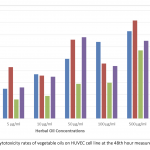

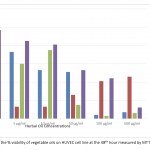
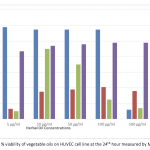
|
103 - 113 |
| Analysis of Conformational Differences of Copper and Alkali Metal Complexes of Insulin Using Trapped Ion Mobility-Mass Spectrometry Technique Molecular recognition, protein folding, and formation of supramolecular structures that occur at the molecular level of biological processes are based on noncovalent interactions. Interactions between metal atoms and proteins are also based on noncovalent interactions that underlie the mechanisms involved in many cellular processes. The activities of enzymes are highly dependent on the interactions of such protein groups with cofactors, substrates, metal ions, and other proteins. The compositions and binding stoichiometry of protein-metal complexes can be determined with high accuracy performing mass spectrometry (MS) analysis. The conformational features of protein-metal complexes can be studied additionally using a mass spectrometer with ion mobility spectrometry (IMS) capability. This study focuses the monitoring the differences in the conformational changes of insulin protein during the formation of its complex with copper and alkali metals using trapped ion mobility spectrometry – time-of-flight (TIMS–TOF) mass spectrometer instrument. The compaction of the insulin structure by the formation of the insulin-copper complexes in the gas phase was determined with TIMS-TOF-MS analyses. However, no change was observed in the insulin structure with the addition of H, Na, and K atoms as adducts at the same analysis conditions. 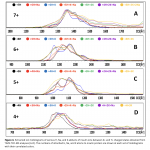
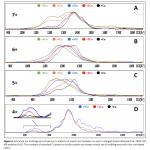
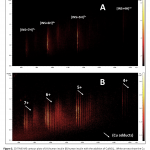
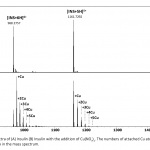
|
113 - 124 |
| Benchmarking Polymeric Cryogels for Immobilized Metal Affinity Chromatography Cryogels are polymers prepared in frozen milieu, and garnered significant attention in the field as new separation matrices. They have denoted significant benefits including supermacroporosity, short diffusion path, low pressure, and resistance for both adsorption and elution. Macro- and connected pores give polymeric cryogels a unique spongy structure. Immobilized metal affinity chromatography (IMAC) is a standard analytical separation method for the purification of bio-molecules. Several transition ions generate stable complexes with electron-rich compounds. IMAC sorbent is obtained by complexing first-order transition metal ions over chelating agents. On the other hand, lysozyme is an enzyme found in various vertebrate cells and secretions. Common applications include its use as a cell disrupting agent, as an anti-bacterial agent, as a meal additive, and as a medicine against infections and ulcers. In this study, cryogel-based polymeric material was prepared by free-radical polymerization method with hydroxyethyl methacrylate/glycidyl methacrylate monomer pair that were covalently interacted with iminodiacetic acid metal chelating agent. The regions showing affinity for lysozyme enzyme were formed by binding with Ni(II) metal ions. The polymeric cryogel was first characterized using Fourier transform infrared spectrophotometer, scanning electron microscopy, thermal gravimetric analysis, X-ray photoelectron spectroscopy and swelling degree test. Then, the effects of pH, concentration, temperature, salt concentration and flow rate on enzyme adsorption capacity were evaluated, and optimum conditions were found. According to the optimization experiments, the maximum adsorption capacity of polymeric cryogel was reported as 11.82 mg/g at pH 7.4 and 25°C with a 0.5 mL/min flow rate and without ionic strength. 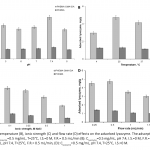
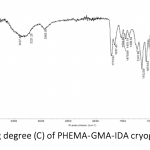
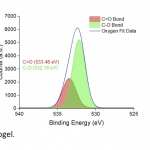

|
125 - 132 |